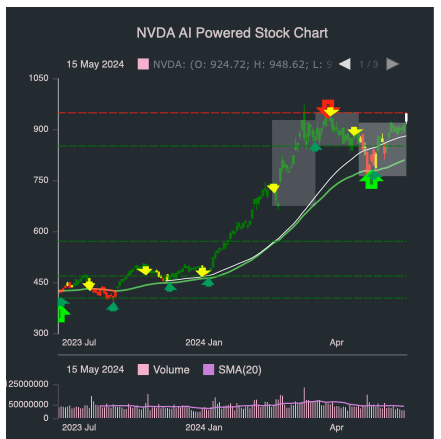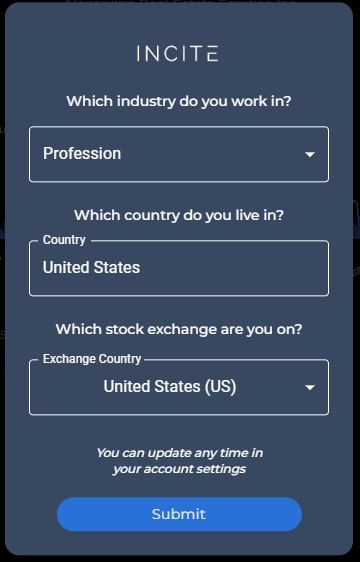20 Best Tips To Selecting AI Stock Investing Analysis Sites
20 Best Tips To Selecting AI Stock Investing Analysis Sites
Blog Article
Top 10 Tips To Evaluate The Data Quality And Sources Of Ai Analysis And Stock Prediction Platforms
In order to provide accurate and reliable data, it's important to check the sources and data that are used by AI stock prediction and trading platforms. A poor quality of data could result in inaccurate predictions, financial losses and mistrust in the platform. Here are 10 ways to judge the quality of data and the source:
1. Verify data sources
Find out where the data came from: Make sure to choose reputable and well-known data suppliers.
Transparency: The platform needs to be transparent about the sources of its data and regularly update them.
Avoid single source dependency The most reliable platforms typically aggregate information from multiple sources to minimize biases.
2. Examine the quality of data
Real-time and. Delayed Data: Check whether the platform offers real-time data or delayed information. Real-time is important for trading that is active. However, data that is delayed could be enough for long-term analytical purposes.
Check the frequency of updating data (e.g. hourly, minute by minute, daily).
Accuracy of historical data - Check that all historical data are uniform and free of gaps or irregularities.
3. Evaluate Data Completeness
Search for missing data. Examine for gaps in the historical data, ticker-less tickers, and financial statements that are not complete.
Coverage. Check that your platform has a wide range of stocks, markets and indices that are pertinent to your trading strategy.
Corporate actions: Find out if your platform is able to take into account dividends and splits in stocks in addition to mergers and other corporate events.
4. Test Data Accuracy
Cross-verify the data: Compare data on the platform against other sources of data you trust to guarantee that the data is consistent.
Error detection: Search for outliers, price points or financial metrics.
Backtesting: You can utilize old data to test trading strategies. Check if they match your expectations.
5. Examine the Data Granularity
The platform should offer granular data, such as intraday price volumes, volumes, bid-ask as well as depth of the order book.
Financial metrics - See whether there is a detailed financial statement (income statements, balance sheets, cash flows) and key ratios (P/E/P/B/ROE etc.). ).
6. Check for Data Preprocessing and Cleaning
Normalization of data: Make sure the platform normalizes data (e.g., adjusting for splits, dividends) to maintain consistency.
Outlier handling: Find out the way in which the platform handles outliers or anomalies that are in the data.
Estimation of missing data: Make sure that the system relies on reliable methods to fill in the missing data.
7. Evaluate the consistency of data
Aligning data to the correct time zone. To prevent discrepancies, ensure that the data in all files is in sync with each other.
Format consistency: Ensure that your data is presented in a consistent manner.
Cross-market compatibility: Make sure that the information coming from various exchanges and markets are in sync.
8. Assess Data Relevance
Relevance for trading strategies - Be sure the data is in line with your trading style (e.g. quantitative modeling or quantitative analysis, or technical analysis).
Review the features available on the platform.
Check the integrity and security of your data
Data encryption: Make sure that the platform is using encryption to protect data when it is transmitted and stored.
Tamper-proofing (proof against the possibility of tampering) Verify to be sure the data was not altered or manipulated by the system.
Conformity: Ensure whether the platform is compliant with data protection rules (e.g. GDPR, CCPA).
10. Check out the AI model on the platform Transparency
Explainability: The platform must give insight into the way AI models use data to generate predictions.
Verify if there's a bias detection feature.
Performance metrics - Evaluate the performance of the platform and performance metrics (e.g. accuracy, accuracy, and recall) in order to evaluate the reliability of their predictions.
Bonus Tips
Reviews and reputation of users Review the user feedback and reviews in order to determine the reliability of the platform and data quality.
Trial period: Use a free trial or demo to check the platform's data quality and features prior to signing.
Customer support: Make sure the platform offers a solid support for data-related problems.
If you follow these guidelines to help you better evaluate the accuracy of data and the sources of AI platform for stock predictions, ensuring you make an informed and trustworthy trading decision. Have a look at the top ai trading blog for website recommendations including ai investing platform, ai trade, ai for investing, ai stock trading, ai for trading, ai investment platform, ai for investing, ai investment app, ai for stock predictions, investment ai and more.
Top 10 Tips To Assess The Scalability Ai Analysis Of Trading Platforms And Stock Prediction
It is essential to determine the scalability and performance of AI-driven trading and stock forecasting platforms. This will ensure that they can cope with the increasing volume of data in addition to market complexity and the demands of users. Here are top 10 tips for evaluating scalability.
1. Evaluate Data Handling Capacity
TIP: Make sure that the platform you're looking at can handle and analyze large data sets.
Reason: Scalable platforms are required to be able to handle growing volumes of data without performance degradation.
2. Test the Real-Time Processing Capabilities
See if your platform can handle real-time streams of data including live stock quotes, or breaking news.
The reason: The immediate analysis of trading decisions is crucial, as delays can lead you to missing opportunities.
3. Make sure to check Cloud Infrastructure for Elasticity
Tips: Find out whether the platform is cloud-based infrastructure (e.g., AWS, Google Cloud, Azure) and is able to scale resources dynamically.
Cloud platforms are able to allow flexibility. The system can scale up or reverse according to the demand.
4. Algorithm Efficiency
Tips: Find out the effectiveness of AI models employed to predict (e.g. Deep Learning, Reinforcement Learning).
Reason: Complex algorithms can be resource-intensive, and optimizing them is crucial to scaling.
5. Investigate the parallel Processing and Distributed Computing
Tips: Check that the platform supports parallel processing frameworks or distributed computing frameworks.
Why? These technologies can speed up data processing across many nodes.
6. Review API Integration and Interoperability
Tips Check the platform's capability to connect with APIs from outside (e.g., brokerage APIs, market data providers APIs).
What's the reason? Seamless integration enables the platform to adapt to the changing environment of trading as well as data sources.
7. Analyze User Load Handling
To test the effectiveness of your system, you can simulate high traffic.
Why should scalable platforms offer the same level of performance regardless of the number of users.
8. Review the model's retraining capacity and adaptability
Tip: Assess how frequently and efficiently the AI models are trained with new data.
What's the reason? As markets shift the models need to be updated quickly to remain accurate.
9. Check for Fault-Tolerance and Redundancy
Tips. Check that your platform has failover systems and redundancy in case of hardware or software problems.
The reason: Downtime is expensive for traders, and the ability to tolerate faults is crucial to allow for scaling.
10. Monitor Cost Efficiency
Review the costs associated with your platform, including the cloud resources, storage and computation power.
The reason: Scalability should not be at the cost of unsustainable costs. Therefore, it is crucial to strike a fair balance between performance and cost.
Bonus Tip: Future-Proofing
Platforms should be designed to incorporate new technologies such as quantum computing as well as advanced NLP. They must also adapt to regulatory change.
By focusing on these elements, you can effectively assess the capacity of AI stock prediction and trading platforms, ensuring they are robust, efficient, and ready for future expansion. Check out the top how to use ai for copyright trading tips for blog advice including investing with ai, ai stock analysis, ai in stock market, ai for trading stocks, best stock prediction website, ai stock prediction, ai investment tools, ai stock price prediction, ai stock investing, chart analysis ai and more.